When Light and Composition Speak, “JOKER” (2019)
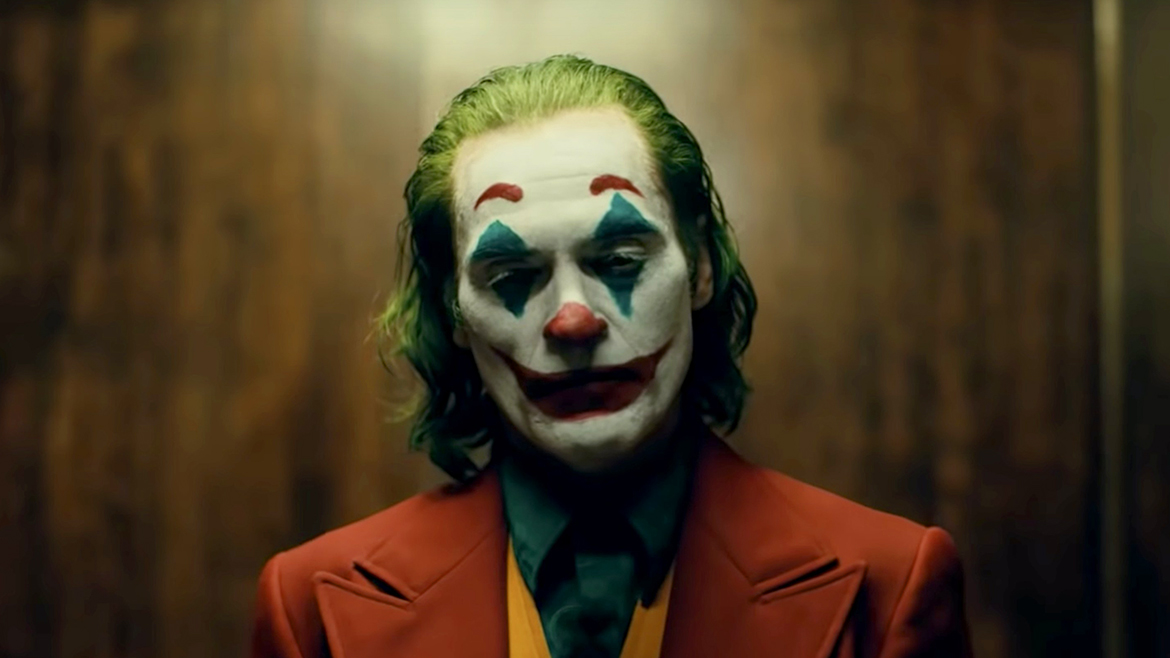
Light and Composition. They are not language. But just the elements of the visual image. They normally could only influence senses but could not deliver tangible meanings, no matter how dearly they dream to do so.
However, in carefully structured works, they can project meanings more profoundly than words could do.
When I heard one of the members of Tokyo Alternative Photography saying “It’s unbelievably good. I’ve seen it 3 times already!” “What the heck. It’s just a DC comic. Just a cartoon. Even in live-action movies, it’s already been played so well by great actors such as Jack Nicholson and Heath Ledger, no need for another one….” was my thought.
I was completely wrong. The moment the movie started, it had me. It completely knocked me down. For one good hour, I could not find any words. It was so overwhelming.
We already have loads of articles and information about this movie available. But still, I was compelled to write something about it, because I was so deeply surprised and impressed as a photographer. The movie made me realize that light and compositions can project meanings more explicitly than language can do.
In classical music, the smallest unit of a melody is called a motif. A group of motifs will make the main melody called a theme. Some important motifs may appear repeatedly in different forms throughout a composition.
We can find a few such significant shots in this movie, which can be called motifs in music.
I have found three important motifs that repeatedly appear in 'Joker'. Each of them is repeated three times. Let me say for now that these motifs characterize the evolvements in the internal world of Arthur, the main character.
Tracking bird's-eye view shot which moves forward along with the train is repeated three times in similar composition.
Over the three steps, The bird’s-eye shot grows darker, more uncertain, and more prophetic.
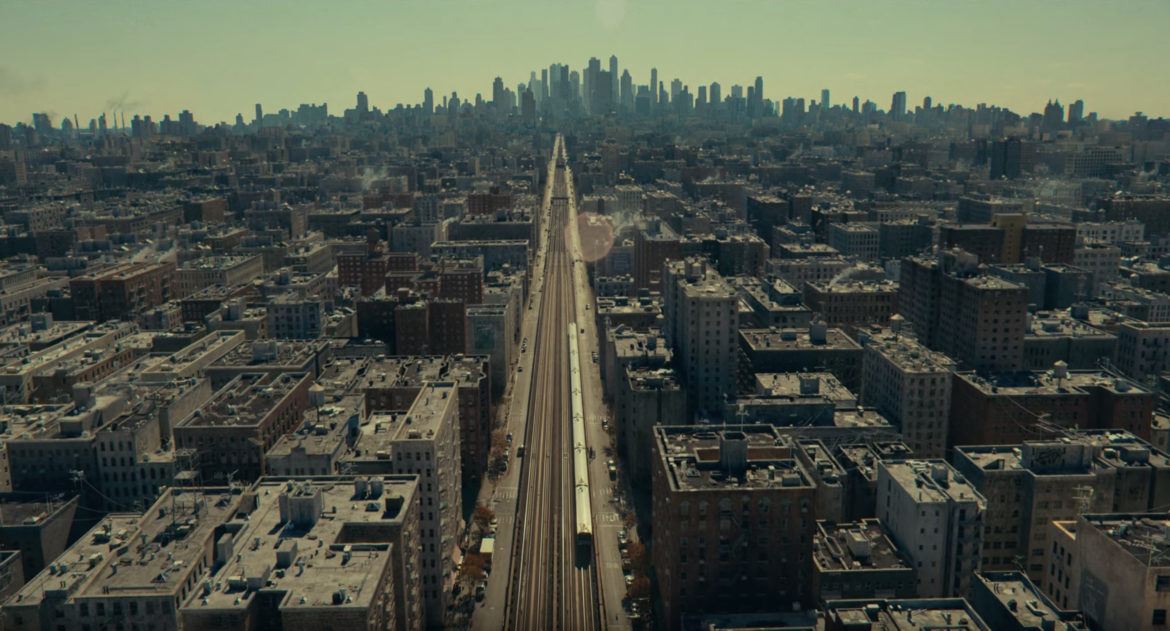
Pure white is usually avoided in a photographic image. The pure white in a frame is so bright that your eyes would be caught with it. But you would be left with no impression because it is just blank there. Therefore, it tends to be avoided to allocate a large area to the pure white.
Moreover, the contrast throughout the movie is controlled low so as to induce the atmosphere in early 80s. Accordingly, the brightness of highlight in this movie is also controlled lower than in average movies.
Pure white is used in the following three scenes in this movie;
1‥The clown as a job was something that he had to cling to in order to live despite being insulted as incapable and creepy. When he was fired from the job, he gained freedom at the cost of despair. At the moment he kicked open the door of the office building, the light outside shines pure white in the screen.
2‥Arthur’s mother has brainwashed and abused him for years since he was little. When he suffocates her with a pillow to death, the sunlight comes in from the window behind his shoulders. The halation of this light is also in pure white. He has swallowed another despair and gained freedom.
3‥While the police car is transporting arrested Arthur through the rioting town, suddenly the light glows and explodes into pure white. This flash light is related to the next motif, too.
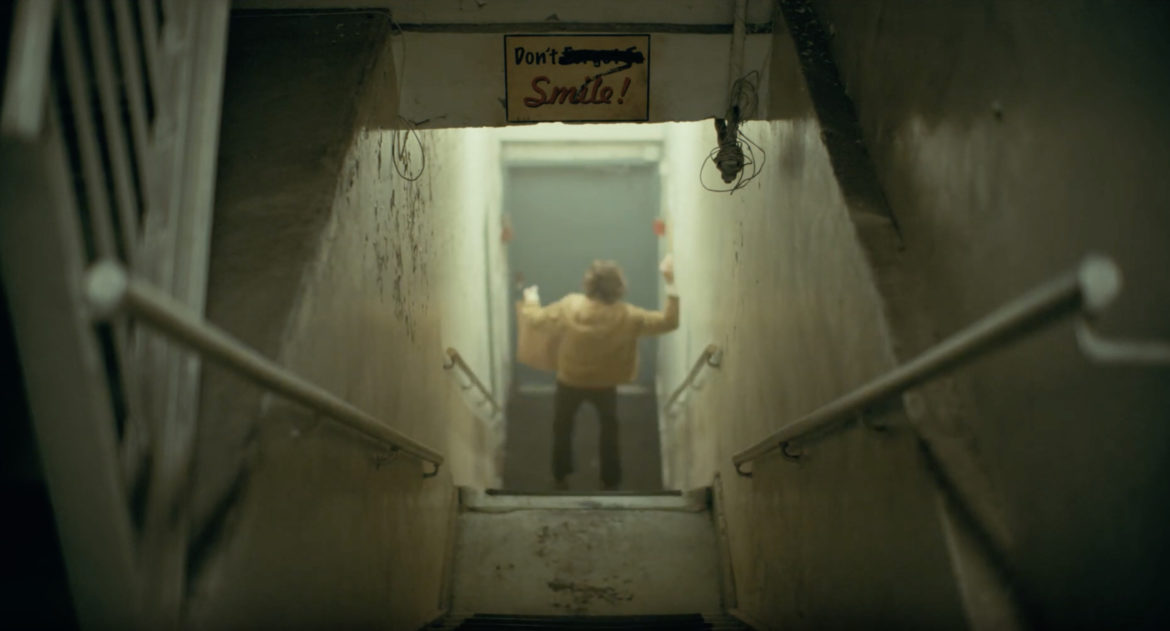
Arthur leaning on a vehicle window and looking out. The shot of Arthur in a vehicle taken from outside is also repeated three times in the same composition.
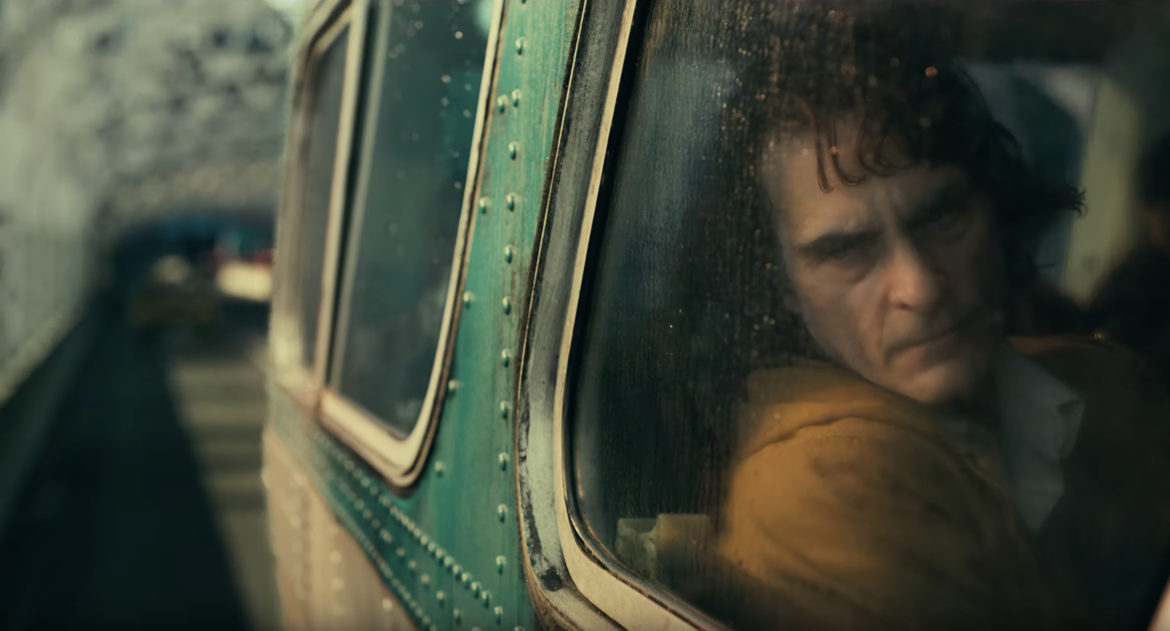
These three beautiful shots reflect Arthur’s own words told to his social worker, “I didn't know if I even really existed."
He couldn’t feel real about his own life, and was feeling it as if he were watching the scenery passing by from a vehicle window. As if he were trapped inside the window and not allowed to be involved in his “real life” happening outside the window. The feeling of being left out from his own life. That is what the shots of his looking gloomily out from the window represent.
And until a little while ago it was like nobody ever saw me. Even I didn't know if I really existed.
Words of Arthur, from the final script of "Joker"
1. Bus window in daytime symbolizing the society that doesn’t show any interest in him.
2. Subway window at night symbolizing his deep despair that does not find any way out.
3. Police car window through which he looks at the dazzles in the rioting town where a dazzling dream is about to begin,
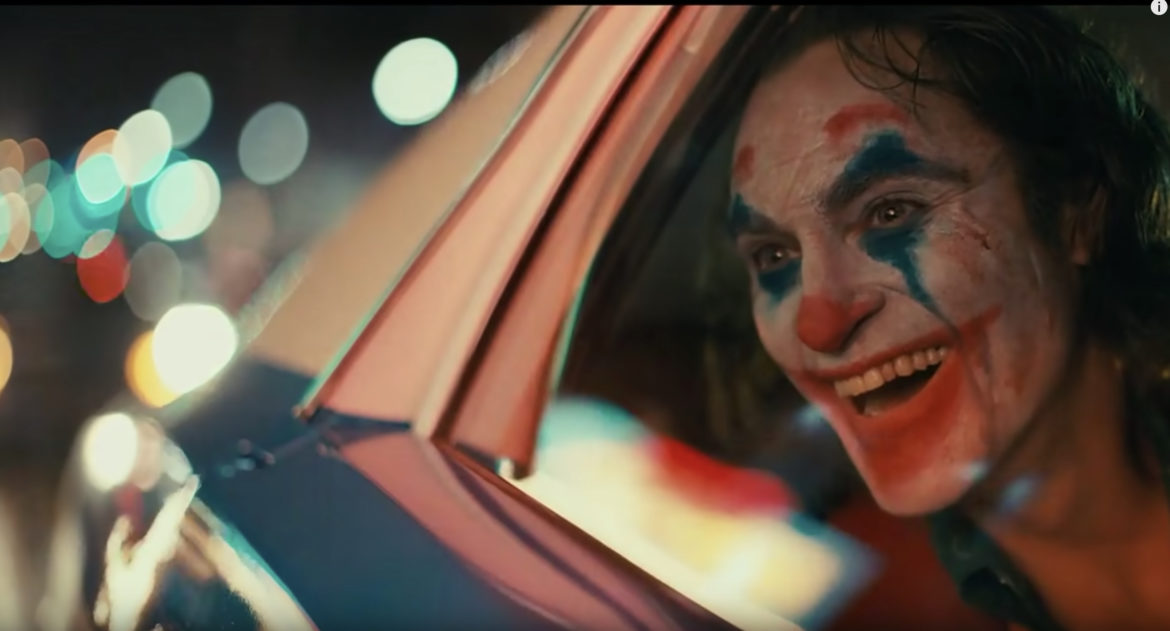
As the police car with Arthur onboard came out to the rioting streets, "White Room" started playing and brought me flaring excitement. As if I were among the mob.
What is making these motifs noteworthy is that they indicate substantial meanings despite that the motifs themselves are not the building blocks of the story.
The tracking bird’s-eye-view shots reveal the changes to happen in the world around Arthur as an omen. They represent his fate that he could not get away from.
The pure white on the screen symbolizes the freedom that he gains at the cost of despair.
And Arthur looking out from the vehicle window indicates that he is left out from his own life and the world.
From alienation, despair, and to the dazzling dream. The scenery seen from the windows changes: from the TV screen that he was only looking at blankly to his unavoidable destiny. And at the moment the dazzle seen from the window grows to burst, the screen that was isolating him from the world is shattered.
A few guys of the mob pull out Arthur in a faint from the broken window (or the shattered screen).
Finally, he awakens and rises to the stage of the world, to his real life, as Joker, The King of Comedy.
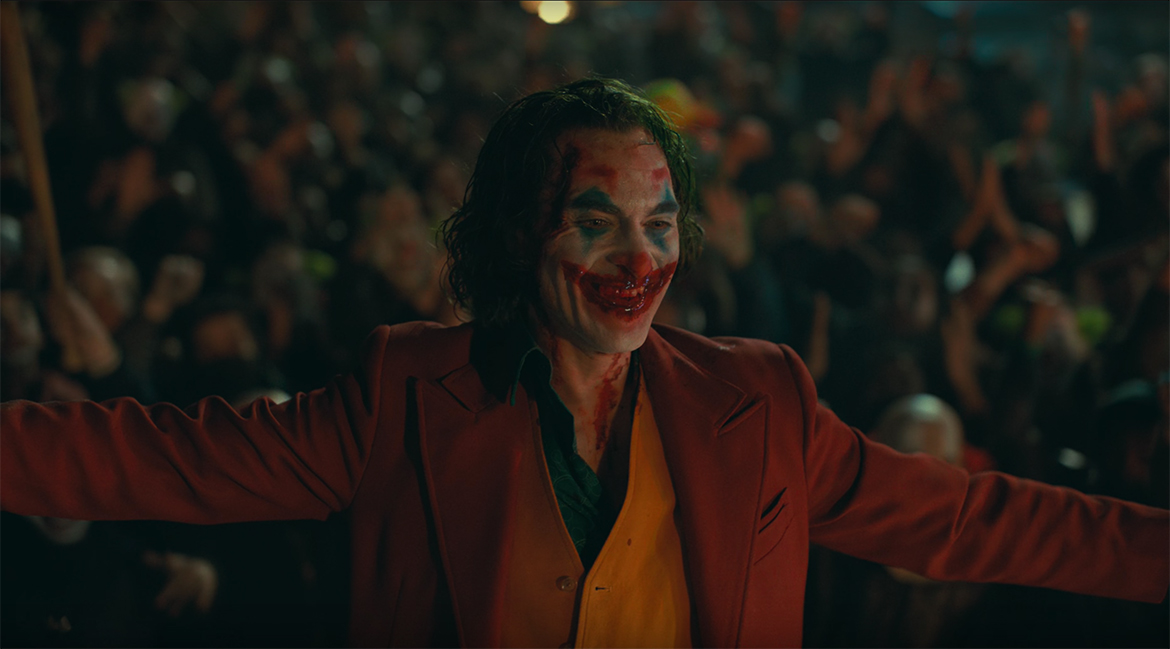
In photographs and movies, composition and light are important elements that determine the nature of the scene. It was difficult for me to think that they can deliver meanings more powerfully than languages can do. Until I saw this movie, Joker.
We consider what photographic images can express is just an indefinite impression. Even when it is intended to express “strength”, the meaning would not appear in a clear shape, but remain fuzzy. Especially an abstract concept, such as “fate”, “freedom” and “life,” can hardly be expressed by anything other than language. If an image attempts to do so, it most likely would end up being an “explanatory image,” for it would be only tracing the language.
However, 'Joker' has proven that elements of an image can be a motif that has a more profound meaning than language can do, when it is structured carefully and precisely. It means that images that deliver meaning more expressively than language, or “literature by photographic images” so to say, can be realized.
When creating works with a theme of personal, earnest matter, we would be faced with an issue of abstraction, because an image would project the scene that I have experienced, but never capture the deep emotion that I have felt. When constructing an alternative work of photography beyond vague impressions, the “literature by photographic images” brings a significant possibility.

Let me touch upon the references and homages in this movie, although many articles have already pointed them out.
This movie follows the style of the past visual culture in American movies and TV shows in the 1970s and 80s, in which we can find the broad theme of this movie, “what is comedy?”.
We can find homages to a few specific movies of the era. The following are some of them;
Especially, clear references to The King of Comedy are seen even in the structure of the movie itself. It follows the method to obscure the border between delusion and reality.
Moreover, Robert De Niro, who starred in Taxi Driver and The King of Comedy, is playing Murray, the popular comedian. This is a particular reference made only possible in movies.
Robert De Niro played the role of “Arthur” in this movie, so to speak, in The King of Comedy. Watching him playing its counter-role, the popular comedian in Joker makes me aware of layers of fiction fabricated in this movie.
The last scene in the psychiatric hospital reminds the viewers of One Flew Over The Cuckoo’s Nest to indicate Arthur’s escape, which lets the ending of this story be interpreted in many ways.
A comedy movie, Charlie Chaplin’s Modern Times (1936), was also referred to as a play within a play.
Furthermore, Smile, the theme music of Modern Times was used very impactfully ...thus very ironically.
It can be said that this movie asks itself the question of “what is comedy?” with repeatedly citing comedy movies. Joker is of self-reference and has a strong element of metafiction, like Ouroboros, the dragon that swallows its own tail.
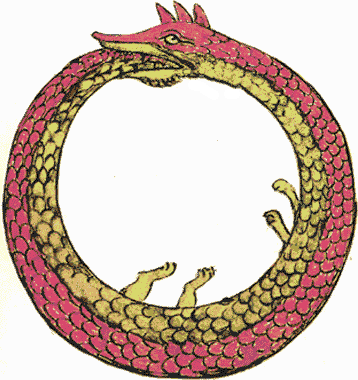
During his interview with the social worker, Arthur tells;
I used to think my life was a tragedy but now I realize it's a comedy
from the final script of 'Joker'
In the "style of comedy" one of the themes of this movie, Arthur also keeps on asking himself what comedy is.
Putting on a mask resolves an individual personality into an anonymous one in the general public. The mobs play koros, or chorus in Greek drama, by putting on a clown mask. Being celebrated by the masked koros, this “comedy film” finally reaches its accomplishment.
However, the ending also makes us remember a “comedy” coincided with a “tragedy” in Ancient Greece.
Feeling suppressed by the world and wishing for liberation from it. Knowing the fantasy will never come true, still wishing to throw myself in there.
“I do live a life like this.”
After seeing the movie, this emerged in my mind after losing words for a while.
It is a dark and violent movie, but at the same time it shows us the human conditions on which we live, and even encourages us. It also plays as a powerful counter against neoliberalism by the imaginative power sincere to the existence of others. The fact that many of the criticisms about this movie profess self-responsibility proves it.
Excellent structure, astonishing techniques, profound insights, respect for history, contemporary message, and beauty. All conditions of an excellent work of art are found in this movie. Its name will surely be remembered in the history of film.
translation: Chiaki Nishi
